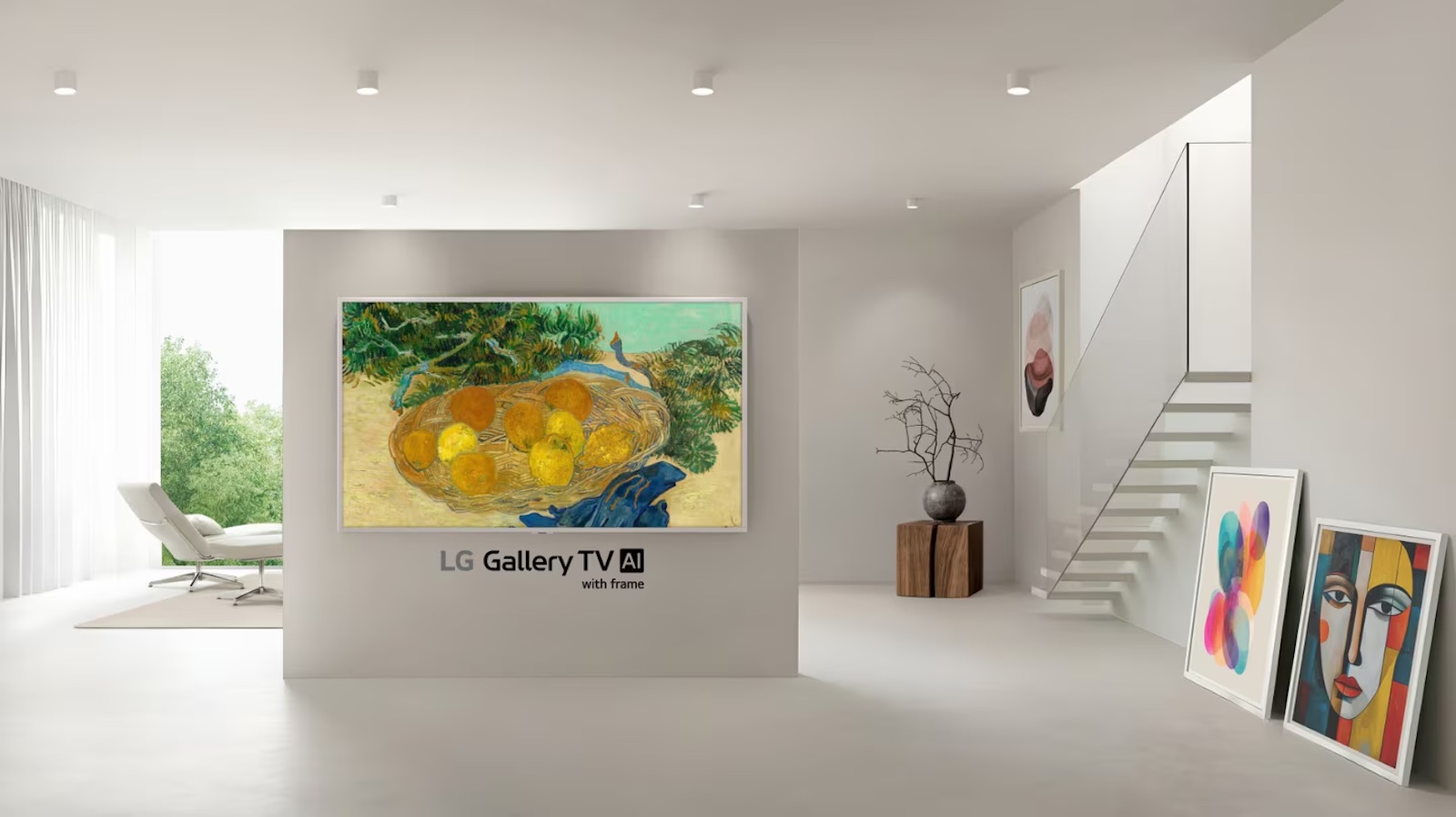What Hi-Fi? Verdict
LG’s sharp and contrasty image really sells this UST projector, making it one of the few models that you might seriously consider ditching your TV for
Pros
- +
Detailed and balanced image
- +
Pleasing design
- +
Comprehensive feature set
Cons
- -
Doesn't sound as good as it should
Why you can trust What Hi-Fi?
Ultra short throw projectors, or USTs for short, are becoming an increasingly popular option for those who want the big screen theatrics of a projector with the convenience of a TV. Space saving is the game here, without the need for mounts or dedicated home cinema rooms to house bulky traditional projectors, the UST’s main advantage is that it can be placed against a wall but it can still produce a huge image.
The LG Cinebeam HU715Q is about as close as a projector can get to being a TV, with a sleek design, sharp picture and built-in webOS operating system. But while it may be close, could it really replace your TV?
The LG is priced at £2999 / $3000 / AU$5795. Next to its main competitor, Samsung's The Premiere, the LG is actually a fair bit cheaper, with Samsung’s UST currently retailing for £3499 / $3499 / AU$6999.
Build
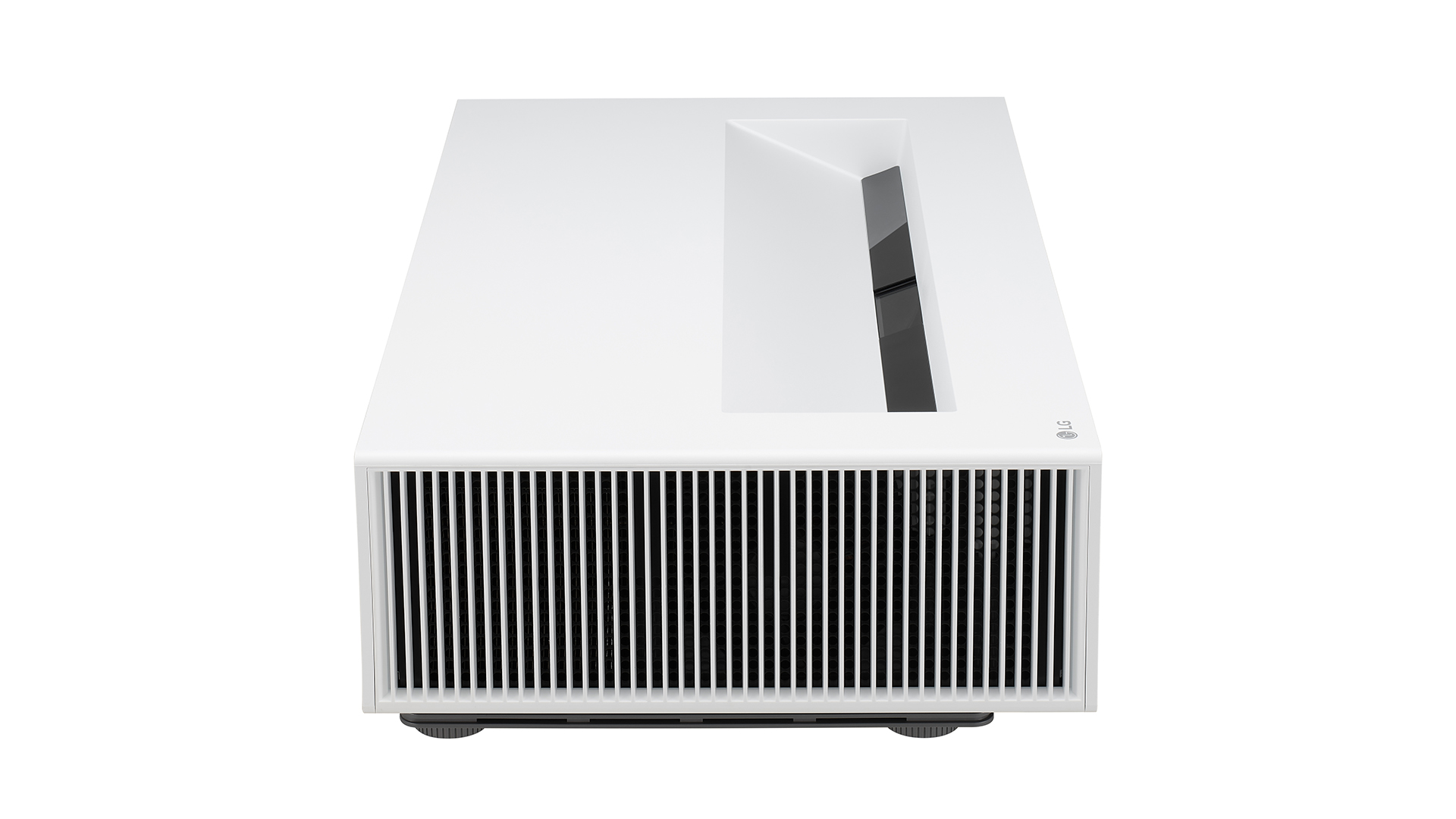
The Cinebeam is an attractive device, which is important as it will be sitting in within eye-line while you’re watching the image it produces. Its minimalist box design comes in a pleasing shade of off-white, and could easily be passed off as the centre speaker of a larger home cinema set-up. There is a small multi-function power button that is hidden underneath the overhanging front panel, giving the projector a smooth and seamless profile.
The projector weighs just over 11kg, making it fairly easy to manoeuvre into place, and its moderate size means it should sit comfortably on any regular television cabinet. The port selection is tucked neatly into the back panel and can be easily accessed. Four adjustable feet can be found on the bottom of the projector; these can be screwed in or out to adjust the position of the image.
Features
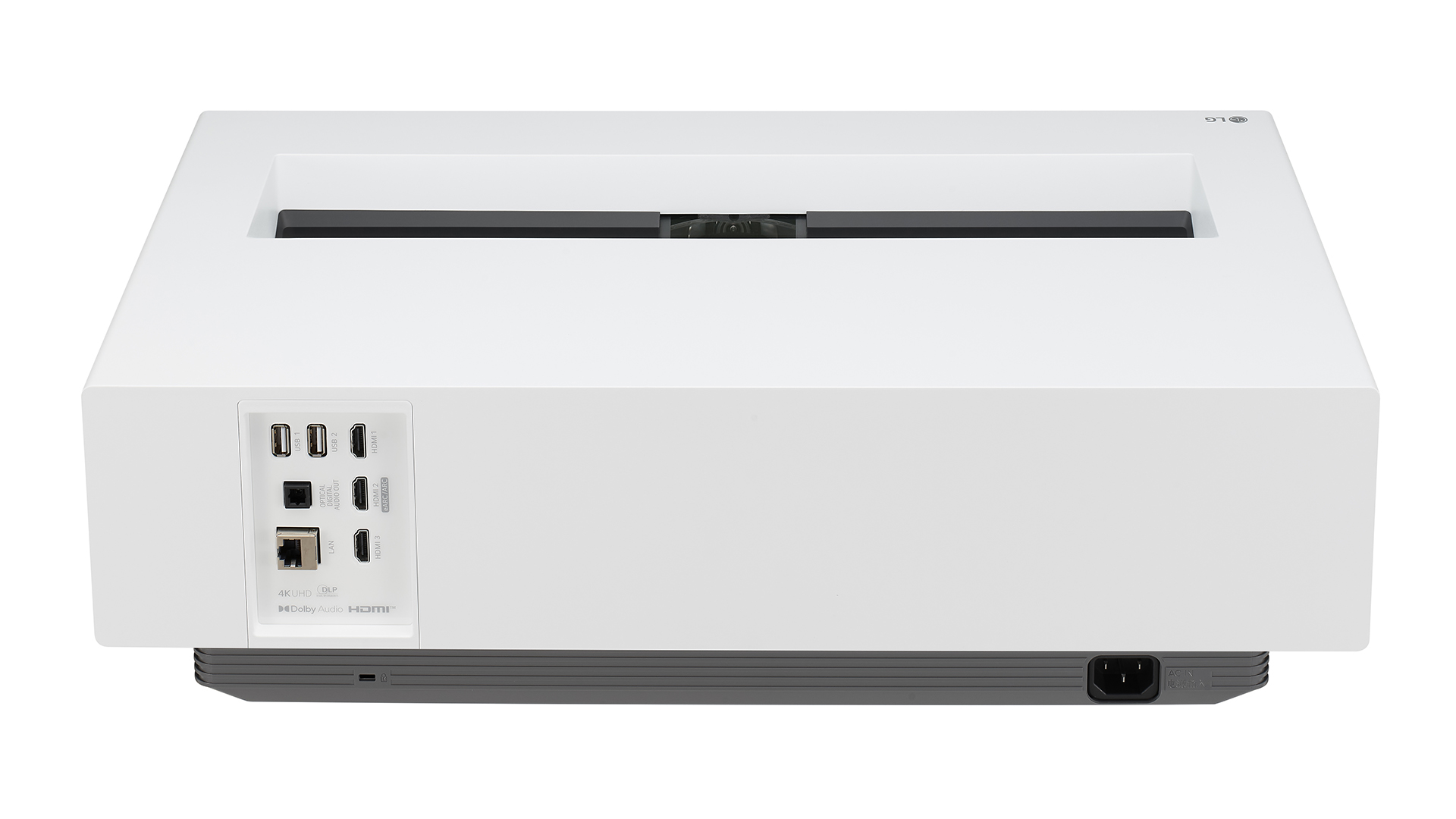
While it's strikingly similar to a TV in use, the HU715Q is still a projector at heart, and one with a laser light source. It has a native resolution of 3840 x 2160 (4K), a peak brightness of 2500 ANSI lumens and a claimed contrast ratio of 2,000,000:1. LG claims that the laser should last 20,000 hours on high brightness and 30,000 on the Economic mode. Fan noise on the HU715Q is claimed to average out at 27dB, and in practice the projector isn’t obtrusively loud, instead emitting a gentle hum that can only be heard when your film is paused.
HDR is supported in the HDR10 and HLG formats. There's no love for the Dolby Vision or HDR10+ dynamic HDR formats, but that's not unusual for a projector and the HU715Q does have its own Dynamic Tone Mapping feature that is designed to automatically make the most of otherwise static HDR signals.
The latest hi-fi, home cinema and tech news, reviews, buying advice and deals, direct to your inbox.
The Brightness Optimiser II feature, meanwhile, adjusts the projector's brightness based on ambient light conditions, and there's an HGiG setting that provides a more accurate HDR performance with many modern games.
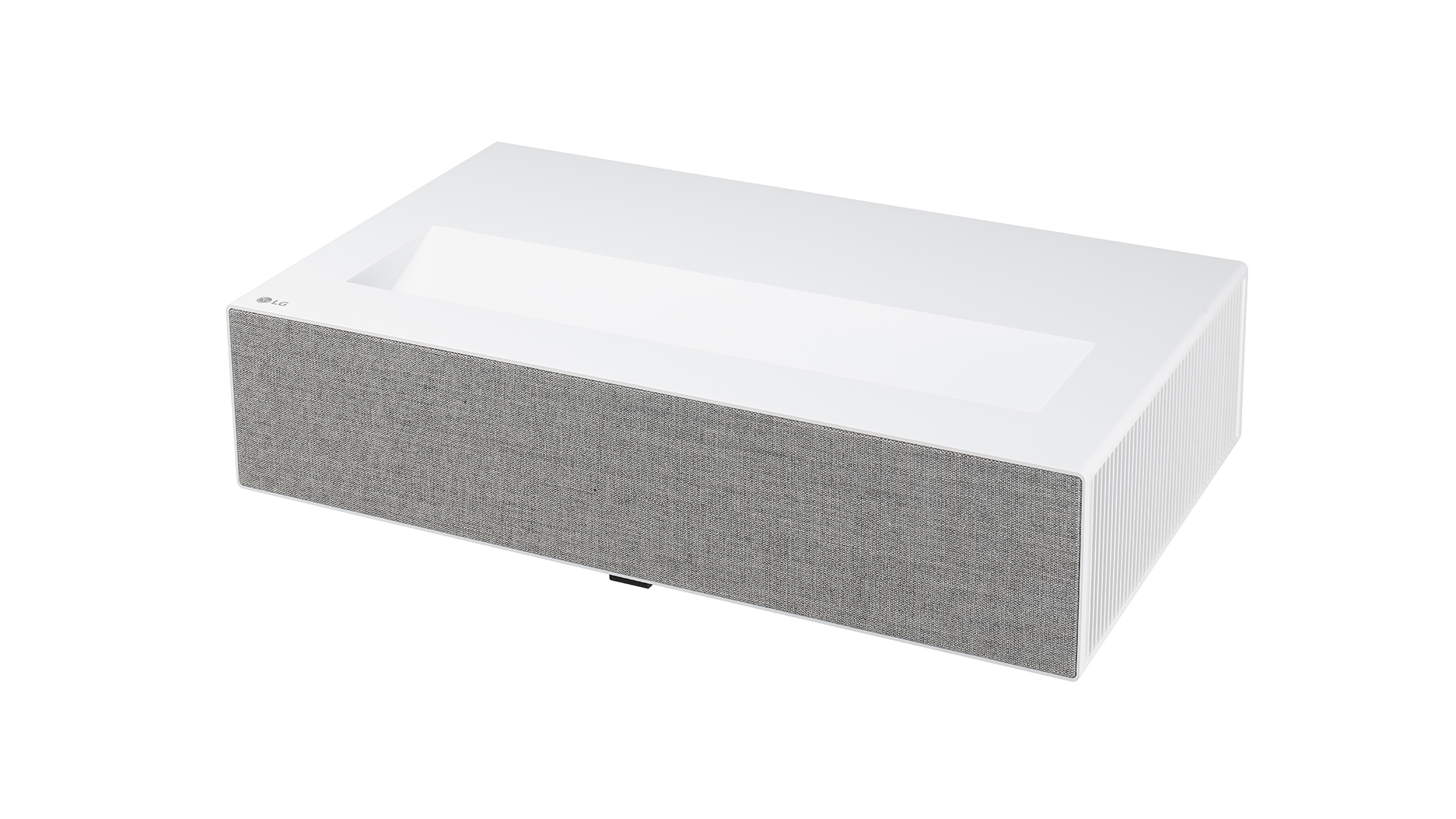
Native resolution 4K (3840 x 2160)
HDR HDR10, HLG
Light source Laser
Operating system webOS
Picture size 80-120 inches
Contrast 2,000,000 : 1
Brightness 2500 ANSI lumens
HDMIs 1 x HDMI 2.1, 2 x HDMI 2.0
As mentioned, LG has adapted much of its TV DNA into the CineBeam UST, most obviously with its webOS operating system. This fully featured smart system means that you can download the likes of Netflix, Disney Plus and Amazon Prime Video natively on the projector without the need for a dedicated streaming device such as an Amazon Fire TV. webOS runs smoothly on the HU715Q and the apps are well optimised, making this a joy in day-to-day use – and with quick access to the streaming apps via dedicated shortcut buttons on the remote, it's super easy to jump straight into your favourite content.
Speaking of the remote, LG has bundled in a comprehensive backlit controller that is more or less identical to the ones that come with its TVs. This includes the motion pointer navigation option that invokes memories of the Nintendo Wii, as well as a scroll-wheel centre button that makes navigating through menus and app homepages a breeze. The controller feels high quality in the hand and means that if you’re familiar with LG TVs already, you should have no problem using this projector.
Connectivity is reasonable by projector standards, with three HDMI connections, one of which is HDMI 2.1-rated. Gamers shouldn’t get too excited about that HDMI 2.1 port as the HU715Q doesn’t support 4K at 120Hz or VRR, but ALLM and eARC are both on board.
Set-up on the LG is simple, and the benefit of its UST nature is that, once it's in position and ready to go, you shouldn’t have to worry about further adjustments or recalibrations every time you want to use it. A common feature of USTs is the lack of motorised lens control, which can make positioning slightly awkward. However, the adjustable feet do the majority of the legwork here.
Positioning is very important with an Ultra Short Throw, as the distance from the wall or screen you’re projecting on can greatly alter the picture size. LG says that the HU715Q has an image size range from 80 to 120 inches, with a 100-inch image possible with the projector placed 21.7cm from the projection surface.
Picture

The LG is admirable when it comes to picture performance, providing a sharp and considered image at a grand scale. Its native 4K resolution shines, with 007’s latest caper, No Time To Die, looking particularly crisp. Details in both skin and clothing textures are refined without looking overly etched, and edges are well-defined. The sharp image picks out smaller details, such as the skin texture on Bond’s hand as he picks up a business card of the evil Spectre organisation. The 4K image evokes the intended TV-like experience while adding some cinematic flair that only projectors can achieve.
As Bond struts across a bridge against an overcast Italian horizon, we can see textured detail in the clouds, and the depth of the image is striking. This is a testament to the LG’s capable handling of contrast. The variation of detail and colour in the clouds is particularly noteworthy, with the rippling grey dusted with golden sunlight particularly eye-catching. Dark detail is also a key strength, with faces obstructed by shadows still retaining plenty of information.
It's noticeable in this scene that there is an overwhelming amount of beige, from the rocks to Bond’s suit, but the LG's careful handling of colours ensures that each shade has a unique hue. All told, there's a very pleasing balance of vibrance and naturalism.
Motion is also excellent by projector standards, with the long panning shot of Bond trudging across the Acropolis remaining mostly smooth with little discernible judder. When the action ramps up, fast-moving vehicles and frantic fight scenes are smooth and clear.
We find that the Cinema Home HDR mode provides the best balance of colour and detail, and while it may lean towards the vibrant side, skin tones retain a warm and lively hue without looking overcooked. Even so, LG has included a plethora of other picture presets and settings to tweak, so you can customise the picture to your liking.
It's worth noting that when compared to Samsung’s The Premiere, the LG doesn’t suffer from the “rainbow effect” nearly as much – this effect being an artefact in which small bursts of colourful light can appear at the edges of your vision. Not everyone is susceptible to this, but if you’re someone who is, this is another reason to consider the LG.
Unsurprisingly, low-resolution content looks fairly ropey on this projector. A DVD copy of the sci-fi epic Interstellar looks blocky and features very noticeable visual artefacts. But you're probably not considering buying a 4K projector in order to watch standard-def DVDs.
Sound
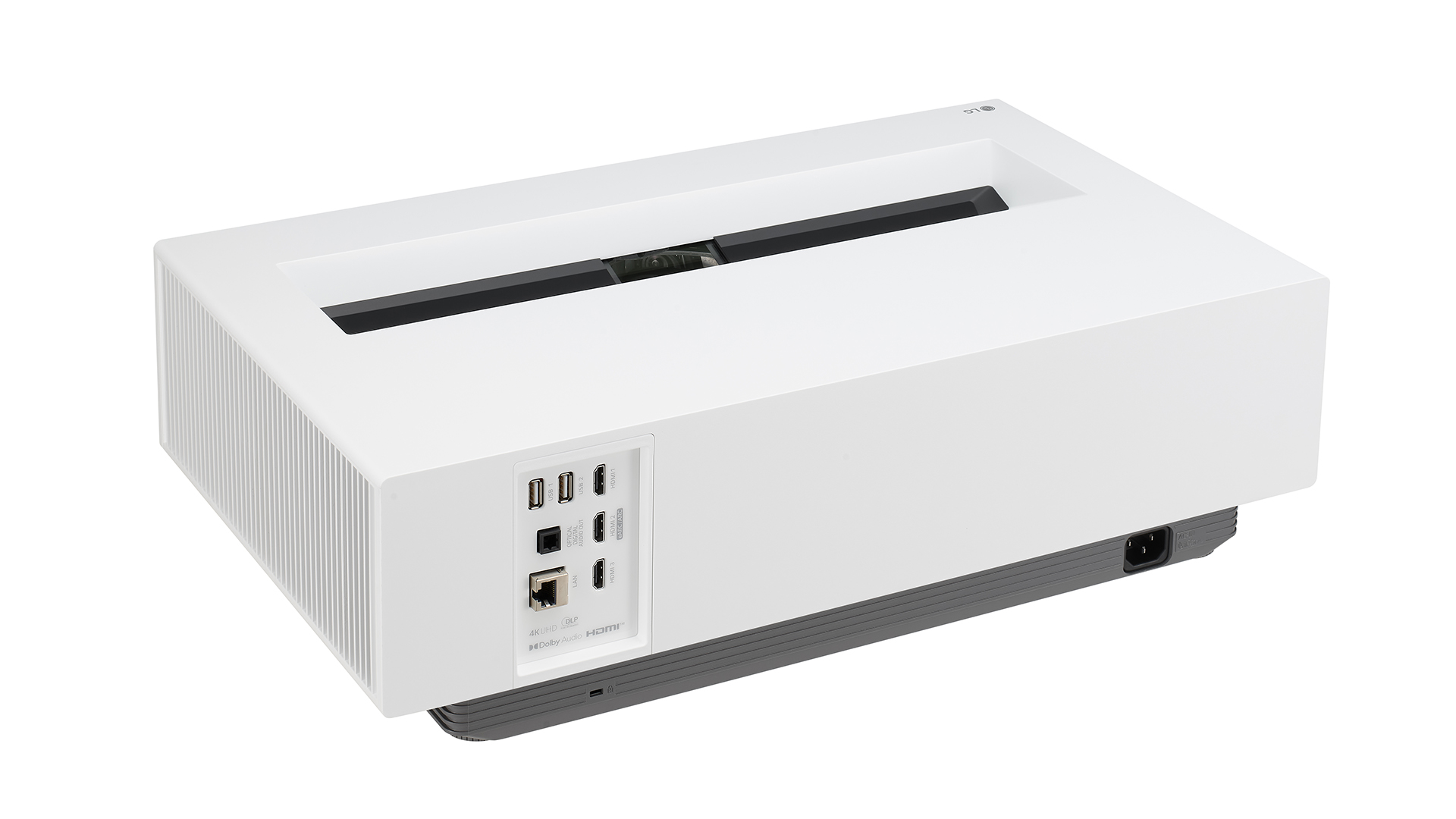
Speaker performance is the LG’s only serious shortcoming. With a built-in, front-firing 2.2 Quad Woofer system, the HU715Q certainly sounds good on paper, but in practice, it's only okay. There’s an overall lack of punch and projection, and the sound is rather confined to the projector itself, holding back from firing out into the room. While some bass is present, the metallic crunch of car crashes and the pop of gunshots can sound hollow and light.
This isn't to say the speakers are unusable by any means, they fulfil the plug-and-play nature of the projector. Voices are certainly clear and it is a perfectly usable presentation that allows you to make use of the projector without the need to splash out on an external sound option. However, we’d recommend pairing this (and almost every other) projector with at least a decent soundbar.
Verdict
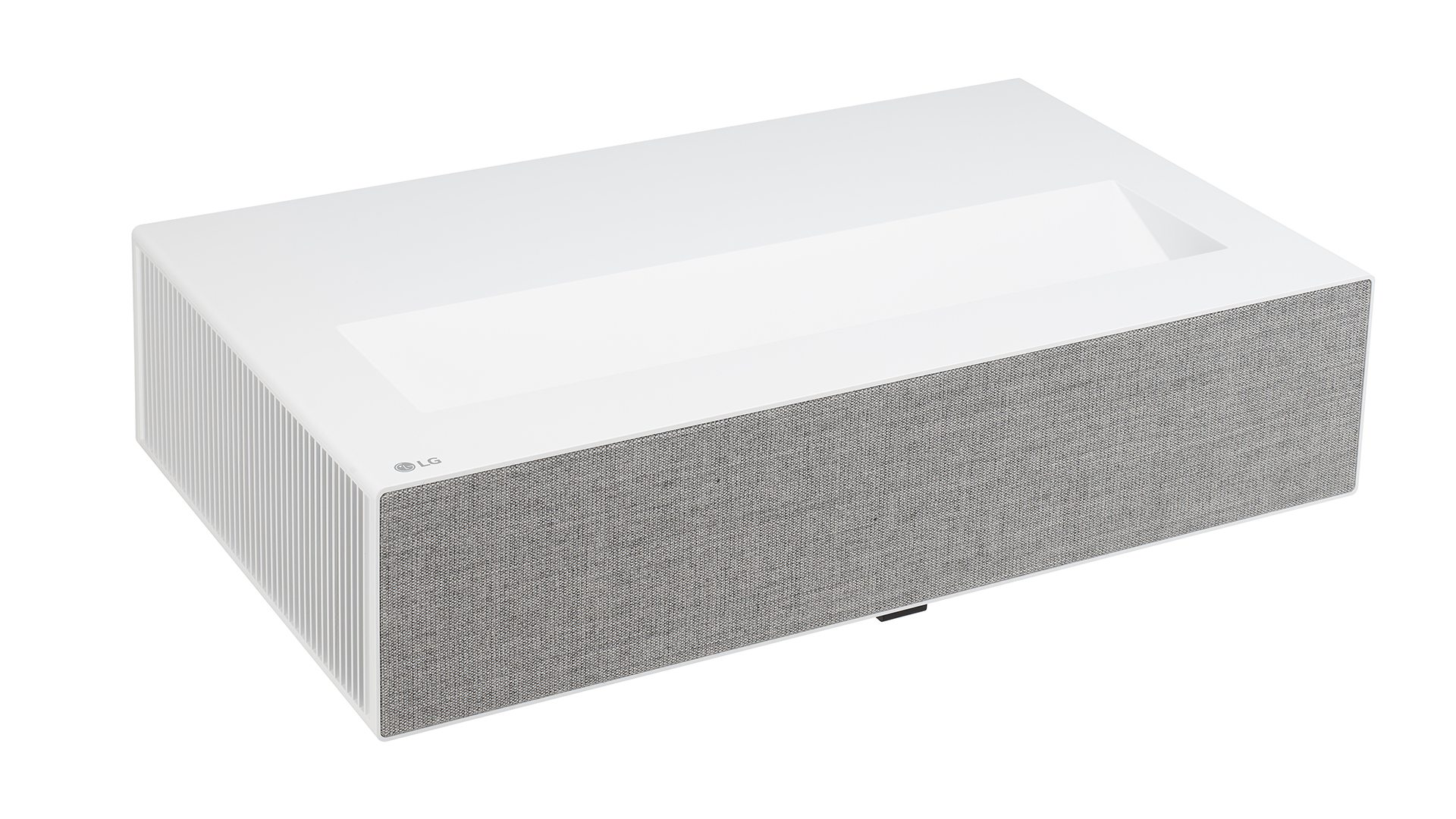
The LG HU715Q is the most convincing case yet for swapping out your TV for an ultra-short throw projector. Naturally, it doesn't offer the inky blacks, striking contrast or next-gen gaming specs of a 77-inch LG C2 OLED, but it does offer a vastly bigger and more cinematic picture – and for a lower price.
You should also consider a traditional home cinema projector, of course, but for those who don't have the space and/or patience, a UST will make all sorts of sense. And if that's the case for you, this is the UST projector that we most heartily recommend.
SCORES
- Picture 5
- Sound 3
- Features 5
MORE:
Find the full list of What Hi-fi? Awards 2022 winners
Read our review of the LG OLED65C2
Also consider Samsung's The Premiere LSP9T
Best projectors: Full HD, 4K, portable and short-throw
What Hi-Fi?, founded in 1976, is the world's leading independent guide to buying and owning hi-fi and home entertainment products. Our comprehensive tests help you buy the very best for your money, with our advice sections giving you step-by-step information on how to get even more from your music and movies. Everything is tested by our dedicated team of in-house reviewers in our custom-built test rooms in London, Reading and Bath. Our coveted five-star rating and Awards are recognised all over the world as the ultimate seal of approval, so you can buy with absolute confidence.

